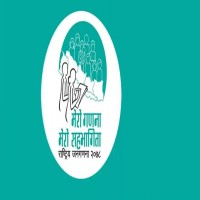Census data to help planning to control maternal mortality: Govt

By A Staff Reporter
Kathmandu, Nov. 13: The concerned government bodies informed that formulation and implementation of necessary plans and policies will be sped up to ensure safe motherhood after they accumulate and analyses the data regarding Maternal Mortality Rate (MMR).
Nepal plans to bring down the MMR to 70 per 100,000 by 2030 as part of the Sustainable Development Goals (SDGs). The latest data regarding MMR in Nepal is 239 per 100,000; it was calculated in 2015.
The study will also provide information to policy makers and programme managers at all the three tiers of government.
According to government health officials, Maternal Mortality Study during the census is the first of its kind in the history and would provide quality data on the country’s current state regarding the issue.
Issuing a notice on Gorkhapatra daily on Friday, Minister for Health and Population (MoHP) Birodh Khatiwada has also requested the public to provide details of any maternal mortality incident (of women aged 15-49) in the family within the past 12 months to the enumerators.
The enumerators have been tasked to fill “maternal mortality index form” in such cases and provide the information either to the supervisor or local health personnel.
Trained health personnel are then sent to the respective families to collect further information of the incident through a “verbal autopsy form”.
“We will be able to gain a better understanding of why women are dying during pregnancy, childbirth and the postpartum period, and the social and clinical determinants behind it through the survey,” said Kapil Prasad Timalsena, Under Secretary at Population Management and Information Division of MoHP.
The data from the study will also provide practically useful information for investment and interventions directed towards improvement of maternal health in Nepal.
Likewise, the study will also provide information to policy makers and programme managers at all the three tiers of government.
“We only have a central data for MMR in Nepal until now. After the study, we can identify and plan targeted interventions that are successful in reducing maternal mortality and morbidity in central, provincial and local level,” Timalsena said.
According to Timalsena, the data will help the government to strengthen the weaknesses and improve the services needed to ensure safe motherhood.
Recent News

Do not make expressions casting dout on election: EC
14 Apr, 2022
CM Bhatta says may New Year 2079 BS inspire positive thinking
14 Apr, 2022
Three new cases, 44 recoveries in 24 hours
14 Apr, 2022
689 climbers of 84 teams so far acquire permits for climbing various peaks this spring season
14 Apr, 2022
How the rising cost of living crisis is impacting Nepal
14 Apr, 2022
US military confirms an interstellar meteor collided with Earth
14 Apr, 2022
Valneva Covid vaccine approved for use in UK
14 Apr, 2022
Chair Prachanda highlights need of unity among Maoist, Communist forces
14 Apr, 2022
Ranbir Kapoor and Alia Bhatt: Bollywood toasts star couple on wedding
14 Apr, 2022
President Bhandari confers decorations (Photo Feature)
14 Apr, 2022











